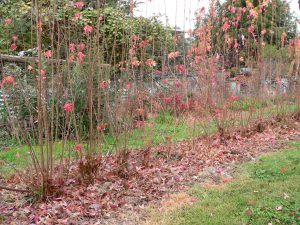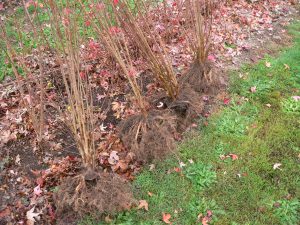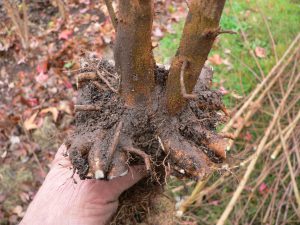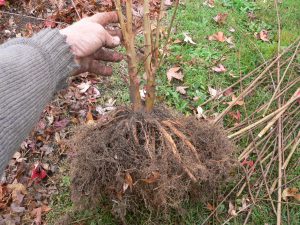It has finally got cold enough for the leaves to drop at Shibui Bonsai. That means it is time to start digging the field grown trees and check progress.
 These trees have been in the bed for nearly one year. They’ve grown from 3 or 4 mm thick seedlings to this.
These trees have been in the bed for nearly one year. They’ve grown from 3 or 4 mm thick seedlings to this.
 In the past I left trees undisturbed in the ground for up to 5 years to try to get maximum growth. I have found that I get far better trees with far better roots if I dig and prune my field grown trees every year. the trees are also far easier to dig because the roots are never more than 1 year old.
In the past I left trees undisturbed in the ground for up to 5 years to try to get maximum growth. I have found that I get far better trees with far better roots if I dig and prune my field grown trees every year. the trees are also far easier to dig because the roots are never more than 1 year old.
 Regular root pruning ensures that 1 or 2 roots do not dominate and allows smaller roots to compete and grow which tends to give a much more evenly spread nebari in future.
Regular root pruning ensures that 1 or 2 roots do not dominate and allows smaller roots to compete and grow which tends to give a much more evenly spread nebari in future.

Pruning the tops quite hard forces more apical shoots to develop. You can probably spot where the stems were pruned last winter leading to 2 ,3 or more leaders on these trees. More shoots allows me more options when pruning. I can prune to give better trunk bends and movement and also create better taper in the trunks. Several smaller leaders seems to give me just as much thickening as a single thicker leader but after pruning the multi leader trees I have smaller wounds which usually heal over faster than a single larger one.
Here are a couple of photo sequences that show my approach to development pruning of field grown tridents.



As dug. Note lots of relatively even sized roots thanks to last year’s root pruning.
Roots cut back quite hard. Each cut end will grow a number of new, smaller roots as a result and new ones may even emerge between the existing roots to fill the nebari even further.
After pruning the leaders. At this stage I’ve left a couple of extra apical shoots until I can find time to assess the tree’s lines a bit better.
Most of these tridents will go back into the grow beds for another year or 2 to continue their development but if I find any that I think may make really good shohin sized bonsai I’ll put them in pots to start the process of building branches.
